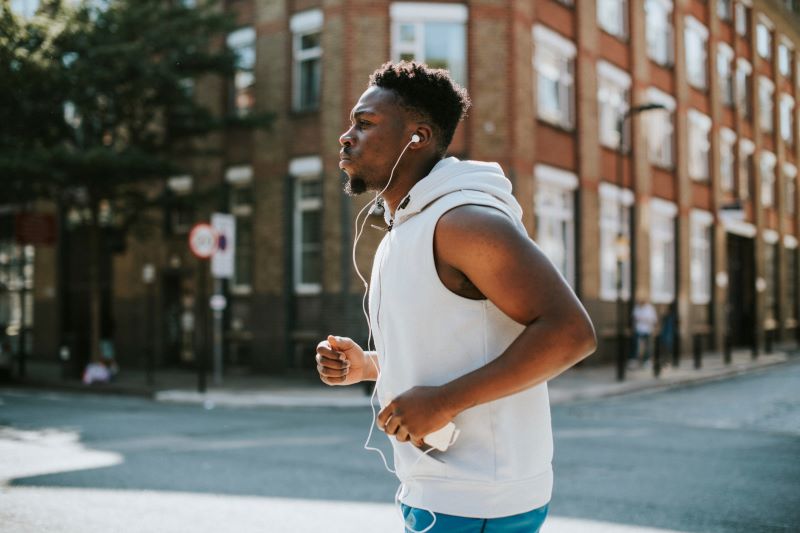
Sensate focus is a technique used to improve intimacy and communication between partners around sex, reduce sexual performance anxiety, and shift away from ingrained, goal-oriented sexual patterns that may not be serving a couple.
The technique, developed by Dr. William H. Masters and Virginia E. Johnson in the 1960s, consists of a series of touching exercises that a couple completes in a sequence. A major aim of the exercise is for the partners to let go of their expectations and judgements of mutual touching, and instead focus solely on the sensory aspects of touch like temperature, texture, and pressure. The idea behind sensate focus is that it allows the couple to relax and be mindful of the sensual touching experience, without being weighed down by preconceived ideas of what “should” happen. Sensate focus has also been described as mindful touching, or non-orgasm/non-arousal focused touch.
Sex therapists may recommend sensate focus to couples who want to address problems related to body image, arousal, desire, orgasm, premature ejaculation, and erectile dysfunction. However, it is important to note that these problems can also be caused by an underlying medical condition, so it is a good idea to complete a physical to rule out other potential causes of sexual dysfunction before getting started.
While there are different variations of sensate focus, Masters and Johnson originally outlined the technique as a five-step process.
Step 1: Non-Genital Touching
Ideally, both partners should be clean, well-rested, and unclothed during sensate focus exercises. If they are not able to be naked, they should wear loose, comfortable clothing.
The couple begins by deciding who will be the toucher and who will be the receiver for the first phase of the process. They will switch roles halfway through this step, so each person will have a chance to touch and to receive touches. The receiver will lie down in a comfortable position, and the toucher will touch him or her anywhere on the body that is not the breasts or genitals. Masters and Johnson kept the genital regions “off limits” during the first step to reinforce the importance of sensuality in touch, as opposed to touch for the purpose of arousal or sexual stimulation. That said, if one or both partners find themselves becoming aroused at any point during this step, they should avoid turning the experience into a sexual encounter because this may lead to them falling back on ingrained sexual behaviors or patterns. Instead, the couple can experience touch at a purely sensory level, feeling the fingers or body of their partner without judgement, expectations, or preconceived notions.
For this step, the toucher can focus on the temperature, textures, and contours of their partner’s body. The toucher might vary the rhythm or pressure of the touch, switch between touching their partner with a full hand or just their fingertips, or notice the changes in texture or temperature between one part of their partner’s body to another.
The receiver should not comment on or guide their partner’s touches in any way, unless something feels uncomfortable, in which case, they should speak up. Otherwise, the receiver should focus on the tactile feelings of their partner’s hands and fingertips, noting sensations throughout the experience. There are no set timeframes for this step, but it is a good idea to switch roles before one or both partners feel bored or worn out. Masters and Johnson suggested about fifteen minutes of touching per partner may be enough time to fully explore these sensations without reaching a point of fatigue. Couples can repeat step one for a series of days, moving on to step two when both feel ready to do so.
Step 2: Genital (and Breast) Touching
The second step follows the same basic structure of the first step, with the partners taking turns being the toucher and the receiver. However, in this step, the toucher can also touch the genital regions of their partner. Nevertheless, the goal is still exploration, not sexual stimulation, so the toucher should not devote more or less time to the genitals than other parts of the body. It is okay if one or both partners become aroused during the process, but again, they should avoid turning the experience into a sexual encounter.
In step two, the couple may also use a technique called “hand-riding,” in which the receiver puts their hand over the toucher’s hand and gives gentle, nonverbal cues to the toucher such as lightly increasing pressure at times. To allow for this technique, the receiver might sit between the legs of the toucher during this step. Again, after the desired amount of time, the couple will switch roles.
Step 3: Adding Lotion/Lubricant
Step three is the same as step two, with the addition of lotion or baby oil for body touching and a lubricant for any genital touching. Masters and Johnson believed that “one of the ways of enhancing sensory awareness is to alter the medium of touch.” The couple should avoid using cold oil or lotion. To do this, the toucher might warm the lotion in his or her hand before putting it on the receiver. Alternatively, the couple could warm the entire container of lotion or oil in a tub of warm water before starting step three.
Step 4: Mutual Touching
In step four, both partners are allowed to touch one another at the same time. Following the same basic principles of the previous three steps, the partners should not touch one another with the intention or expectation of sexual arousal, but rather with the mindset of simply noticing the sensations and feelings of contact. For this step, the couple may also use their lips and tongues to touch one another but should avoid kissing and oral sex. In this way, they avoid reverting to old sexual patterns and they allow themselves to discover a new level of sensuality and sensory appreciation.
Step 5: Sensual Intercourse
Masters and Johnson were very intentional about the title of the last step of sensate focus: “sensual intercourse.” Throughout this technique, the couple has been focusing on developing a new level of awareness related to touch. Therefore, they do not want to return to the sometimes mechanical, orgasm-driven nature of sexual intercourse. Instead, they can continue practicing mindfulness during sensual touch by noticing the temperature, shape, and texture of their genitals as they come into contact again. They might insert and remove fingers or the penis into the vagina slowly several times before engaging in instinctive thrusting patterns. Perhaps, they will vary their breathing and see how this affects the sensations. However the couple chooses to proceed, they should try to remain aware of touch and physical sensations in the same way that they practiced throughout the process.
A knowledgeable sex therapist can provide further information and guidance on sensate focus and other sex therapy techniques. If you believe that you and your partner could benefit from sex therapy, you can search for a licensed sex therapist in your area here.
Resources:
Boskey, E. Medically reviewed by Carly Snyder, MD. (2020, June 4). Sex Therapy With Sensate Focus. Verywell mind. https://www.verywellmind.com/sex-therapy-with-sensate-focus-4145783
Cornell Health. (2019, Oct. 18). Sensate Focus. https://health.cornell.edu/sites/health/files/pdf-library/sensate-focus.pdf?source=post_page
Miles, J.R. Medically reviewed by Lynn Byars, MD, MPH, FACP. (2021, Feb. 22). Sex Therapy With Sensate Focus: How It Works & What to Expect. https://www.choosingtherapy.com/sex-therapy-sensate-focus/
You may also be interested in...
Other Popular Articles

What Is Jelqing, and Does It Actually Work?
The term “jelqing” refers to a set of penis stretching exercises that some believe can make the penis bigger. Although the practice has gained attention and popularity in blogs and internet forums in recent years, there is no scientific evidence that it is an effective way to permanently increase the size of one’s penis. In fact, in some cases, jelqing may actually cause damage to the penis, so it is a good idea to get all the facts before setting off to try it.

What Is the Average Penis Size?
If you have ever wondered how your penis compares to others in terms of size, you are not alone. Many men are curious to know how their penises stack up compared to the average. Unfortunately, general curiosity can sometimes give way to full-on obsession and anxiety about penis size. This can be an unhealthy and often unnecessary fixation, especially because most men who think their penises are too small have perfectly normal-sized penises.

Can Sex Reduce Menstrual Cramps?
The SMSNA periodically receives and publishes ‘guest editorials.’ The current article was submitted by Mia Barnes, a freelance writer and researcher who specializes in women's health, wellness, and healthy living. She is the Founder and Editor-in-Chief of Body+Mind Magazine.
Having sex while you experience menstrual cramps is healthy and can provide significant benefits. While it might not be the first activity that comes to mind when your PMS or period cramping begins, many people enjoy sex to reduce menstrual cramps, experience increased pleasure and benefit from other advantages. Learn more about having sex while menstrual cramps are happening and how it can help your body.

What Is Edging and Why Do People Do It?
Edging is the practice of stopping sexual stimulation before reaching orgasm to prolong a sexual experience. The term stems from the concept of approaching the metaphorical “edge” of orgasm but stopping before going over the edge.

The Effect of Regular Aerobic Exercise on Erectile Function
Erectile dysfunction (ED) is the inability to achieve or maintain an erection sufficient for satisfactory sexual activity. As men get older, their erectile functioning may naturally decline due to changes in testosterone levels, cardiovascular functioning, and the potential development of other chronic medical conditions that become more common with age.

The Sex-Positivity Movement: What it Means to Be Sex-Positive
You may have heard references to “being sex-positive” or “the sex-positivity movement” in popular culture. Various celebrities have brought attention to this movement by speaking out about their beliefs and personal experiences regarding sexuality, sexual health, body positivity, “slut-shaming,” and sexual assault.

